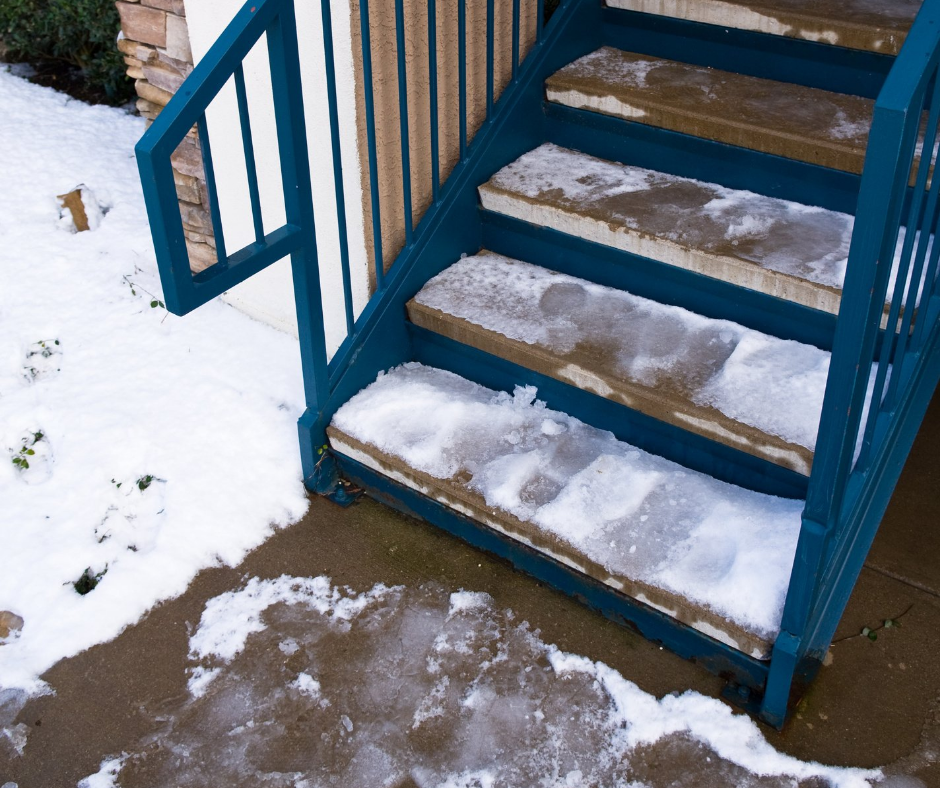
De-icing Outdoor Walking Surfaces in Winter
Keeping outdoor walking surfaces—such as car parks and pavements—clear of ice in the winter is a crucial practice at many workplaces. Not only does ice removal offer aesthetic benefits, but it can also help keep you, your colleagues and the general public (eg customers or passers-by) protected from the risk of slips and trips.
With this in mind, here’s how you can play your part in promoting effective and safe de-icing measures at the workplace this winter.
Ice Removal Best Practices
Utilise the following guidance to ensure proper ice removal procedures at work:
- Use grit. The most common method for de-icing an outdoor walking surface is by applying grit to car parks and pavements. Grit is an affordable and easily applicable solution to de-ice surfaces. Either plain or treated rock salt is the most common substance used for gritting. The primary purposes of grit are to prevent ice from forming and melt existing ice and snow. In addition to rock salt, ash and sand can also be used to help provide grip underfoot. More grit may need to be applied when attending to steps and slopes.
- Watch the weather. Keep an eye on the weather forecast to determine when you need to apply grit to outdoor walking surfaces. Salt should be applied when temperatures are below freezing or if conditions such as snow, hail or sleet are possible.
- Apply grit at the right times. Salt doesn’t work instantly. In addition to monitoring the weather, plan the timing of your gritting process to maximise its effectiveness. The best times to apply grit are early in the evening before frost settles and early in the morning before significant foot traffic. Avoid applying grit while it is raining, as the rain may wash salt away.
Winter Weather Precautions
While de-icing outdoor walking surfaces at the workplace, it’s vital to protect yourself from winter weather risks. Be sure to implement the following safety precautions during ice removal:
- Always check the weather before working outdoors to properly prepare yourself. Try to limit your time outside if weather conditions are extremely cold, wet or windy.
- Ensure you dress appropriately for the task at hand. Wear several loose layers of clothing, a warm hat that fully covers your head and ears, mittens (rather than gloves) and thick socks that will keep your feet dry. Also, utilise wellies with plenty of traction and insulation to keep your feet warm and reduce your risk of slipping on icy or snowy surfaces.
- Take a few minutes to stretch before you begin working outdoors to better prepare your body and limit the potential for sprain or strain injuries.
- Be sure to eat healthy foods rich in carbohydrates and protein prior to working in the cold to help fuel your body. Stay hydrated by drinking plenty of water before, during and after your shift.
- Make sure you know the initial signs of health complications, such as overexertion, fatigue, frostbite and hypothermia. If you start developing symptoms for these issues, stop working and inform your supervisor.
Safety First
Your safety is our first priority. If you have any questions regarding workplace ice removal measures, talk to your supervisor.
For more information about how to keep safe this winter, call us today on 01905 21681 or alternatively email Enquiries@sutcliffeinsurance.co.uk.
